Goodram IRDM PRO M.2 review. In this review we are going to test the recent top range of the Polish manufacturer
If you read our pages you will know Goodram and will need no introduction, we have often brought their products under our careful examinations. With the recent Goodram IRDM PRO M.2 the manufacturer based in Poland imposes itself strongly on the market, producing an SSD that it has nothing to envy to the most famous products on the market.
To make a brief recap, we are facing a product that boasts declared 7000 MB/s in reading and/or writing, equipped with an excellent controller, let’s talk about the Phison PS5018-E18, and excellent Micron high-quality memories, such as 3D TLC NAND. Let’s go into the detail of the review to find out more about this product, which, unlike the classic SSDs, also comes with a complete kit equipped with two additional extra heatsinks.
Unboxing and Specs | Goodram IRDM PRO M.2 review
High profile package for this product, just what one would expect from a top range such as the Goodram IRDM PRO M.2. An element certainly to be underlined as the care and the material present is not seen so easily for this type of product.
We have within the package, in addition to regain the usual info reported and some nice stickers, we have several layers of foam to protect from the elements. We immediately find the Drive, a really well made aluminum heatsink or heatsink, with a consistent weight and a noteworthy structure.
If you want to install the Drive on a motherboard without using theheatsink thermal armor (if present) owner usually an integral part for medium and high-end models, or simply exploiting the maximum in terms of dissipative performance, this is right for you. The integrated dissipator has a lamellar body structure of good consistency, we have 8 elements for an important thickness, then there is the integrated thermal pad ready for use. Also aesthetically beautiful, with the logo shown. There is also the possibility of being fixed with 3 holes on each side.
We then have a second heat sink, much more classic, it is an aluminum trolley block, which could act as an alternative if space is limiteddoes its job, and replaces the classic passive heatsink present on motherboards, known as thermal armor. Finally we find 6 screws for installation, and a small screwdriver.
The drive is obviously compatible with all M.2 slots, having the PCIe 4.0 standard, it is then 80 mm or 2280 type. If you install it on motherboards with PCIe 3.0 obviously you will reduce performance by not enjoying the power of this Goodram IRDM PRO M.2.
A look at the technical specifications
We continue with the review of this Goodram IRDM PRO M.2 by telling you about the specifications of this product, which are very respectable and position the Drive directly among the high-end products on the market.
The new Goodram IRDM PRO M.2 builds its strength on the latest revision PS5018-E18 controllerlet’s talk about a recent high-end controller which we find precisely only on important products. Made by TSMC at 12nmtransfers with protocol NVMe rev. 1.4integrates a Internal DDR4 DRAM memory, and supports 8 channels for 1600MT/s transfer rate. In short, a respectable and very performing Controller that ensures enough longevity to the Drive.
The European manufacturer then opted for Micron 3D TLC NAND memories are of the 176L type, and are named B47R Fortis Max, which by structure and equipment, they simply represent the best Chip that can be found in retail today. They are even equipped with internal DRAM cache memory of 1 GB, the relationship with the Controller, door this drive to go up to 2666 MT/s. Well above the average of SSDs on the market.
1 of our test Review of Goodram IRDM PRO M.2
Test Bench used;
- Case: Be Quiet! Silent Base 802
- Scheda Madre: MSI MPG B550 Gaming Plus
- Dissipatore: Be Quiet! Silent Loop 2 360mm
- CPU: AMD Ryzen 7 3800X
- GPU: Gigabyte 1050 TI
- RAM: GOODRAM IRDM Pro H.W. 16GB 3600MHz
- SSD: //
The company declares for this product about 7000 MB/s in reading and 5500 MB/s in writing, is it true? We conducted extensive tests to determine this and are now going to show them to you.
Before diving into the texts, it is good to remember that SSD or Hard Disk performance is classified using two main and different parameters: the sequential speedwhich indicates the theoretical maximum speed at which data is read from or written to the disk sequentially not IOPS (input/output operations per second) which instead indicate the speed with which data is read or written in a random way, using small 4KB files. Sequential speed is expressed in MB/s (Megabytes per second) o GB/s (Gigabytes per second), while IOPS is expressed as a number (ie the maximum number of input and output operations that the unit can “hold” each second). In the daily use of an SSD or Hard Disk, the value of the IOPS is very important both as an indicator of real performance and as a duration of the drive. The use of some certain software returns very reliable values in this field.
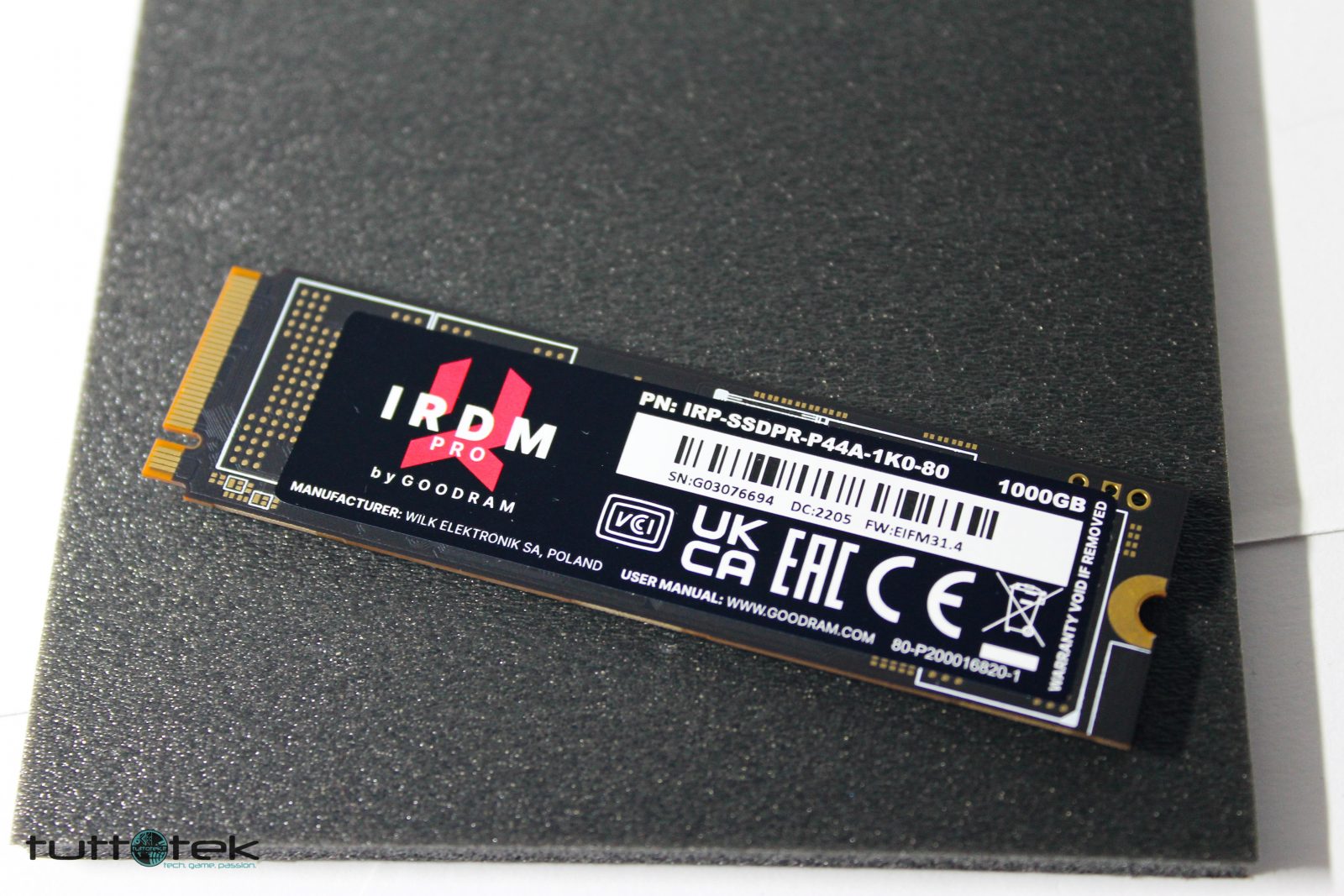
Transfer testing
Before diving into synthetic tests or benchmarks, let’s go and carry out the usual real tests, simulating a situation of daily use. These tests make sense as currently some controllers benefit from compressed files, while others don’t. Some storage drives face small files have lower performance, some work fine with them.
I prepared a compressed folder containing files for about 30GB, between various documents (PDF, Word files, etc.), photos, videos and films, for about 6,000 files each with a different weight, from a few MB to many GB. The writing phase, as we can see, is very fluid and constant, and there are no important negative drops or worrying curves that could show instability. By monitoring the transition, the performance was always attested to the average you see in the graph, 1.13 GB/s still represent an excellent result.
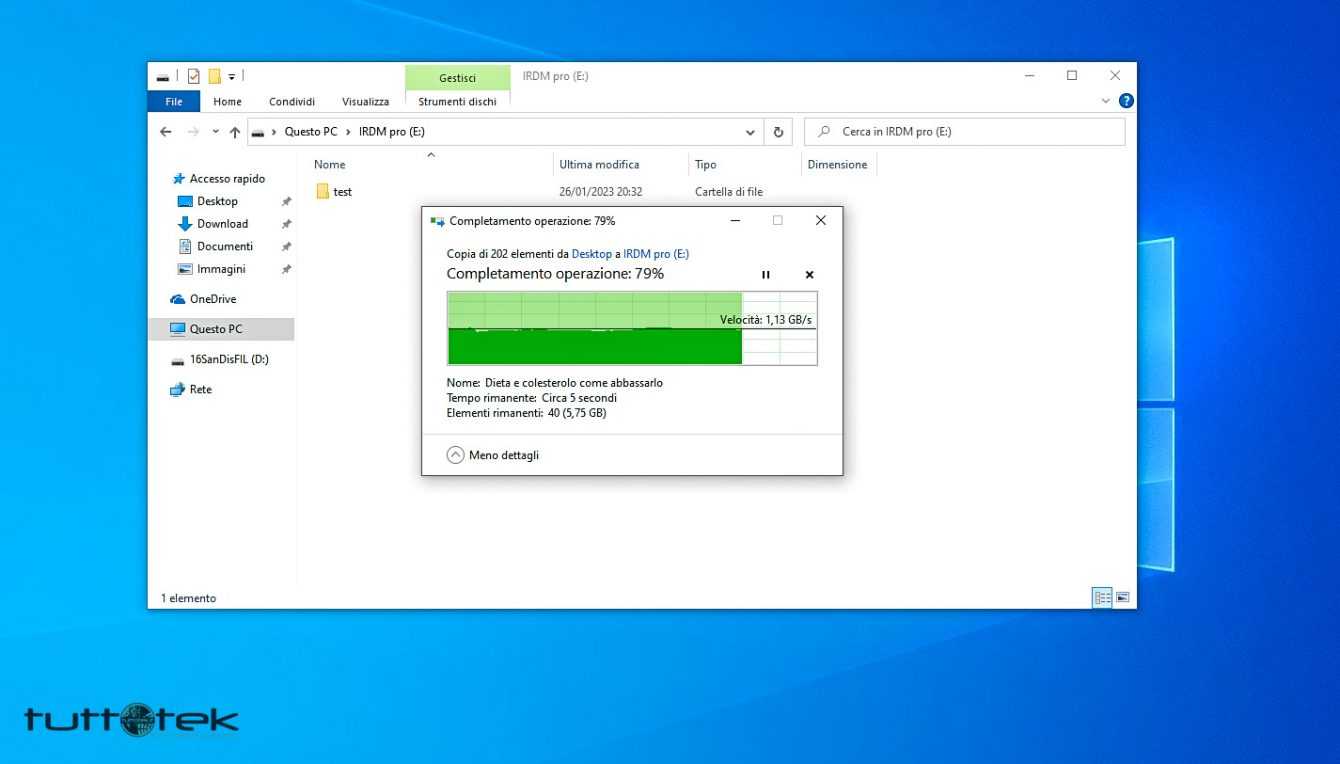
Goodram IRDM PRO M.2 in action with CrystalDiskMark
The next test was done with CrystalDiskMark, to measure the maximum theoretical sequential read/write performance with random data of various sizes.
GOODRAM SSD IRDM M.2 performed decidedly well, with respectable performances that certainly place it in the high end of the market. In fact, we are talking about a value of 7365 MB/s in reading, and a good 3548 MB/s in writing.
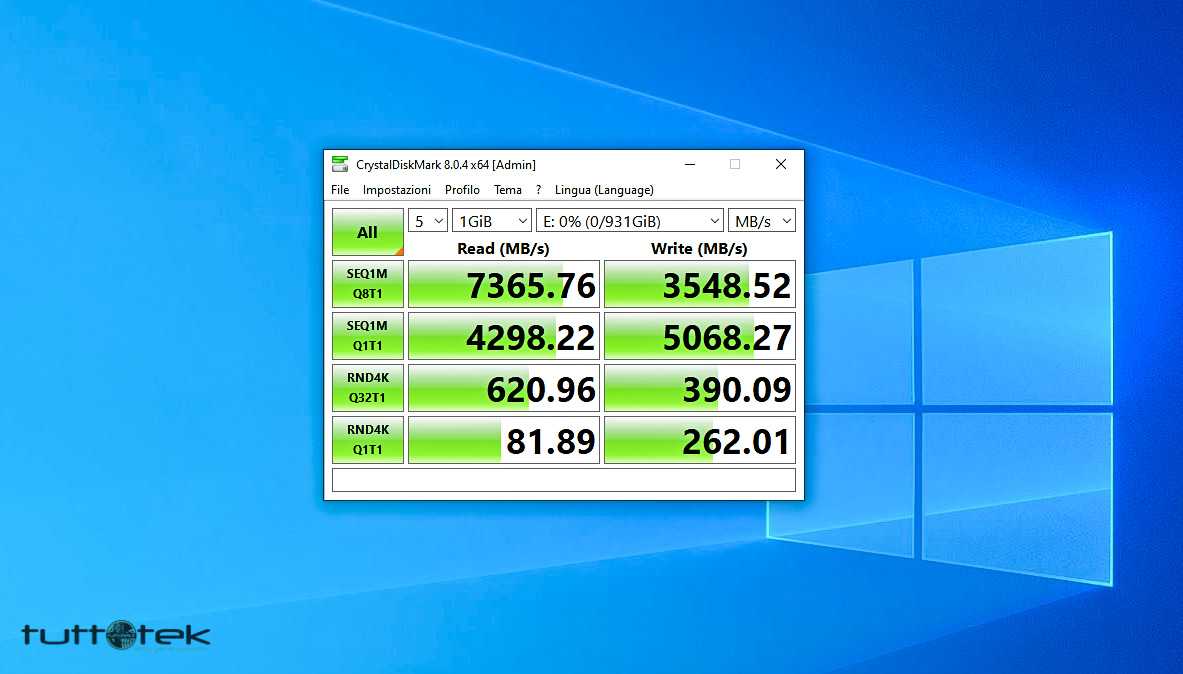
Goodram IRDM PRO M.2 in action with Atto Disk Benchmark
I then submitted IRDM M.2 to Atto Disk Benchmark software. One of the best tools available for measuring storage performance. Famous for being very reliable, it produces very accurate results. With ATTO we can test sizes of building blocks. So we can test with a sequence of 32MB of 4KB files, but also 32MB in 1MB files. Which then represents the most important and difficult task for any storage drive, which is to write very small files quickly.
Here too the data obtained is of a high profile, on the reading front we have high performance, with all the file cuts used. In writing we can observe with 32 KB files write speeds of 1.25 GB/s. Sign of excellent performance stability in daily use. It is the reading performance that surprises, really high, then impresses the coherence of access to memory cells.
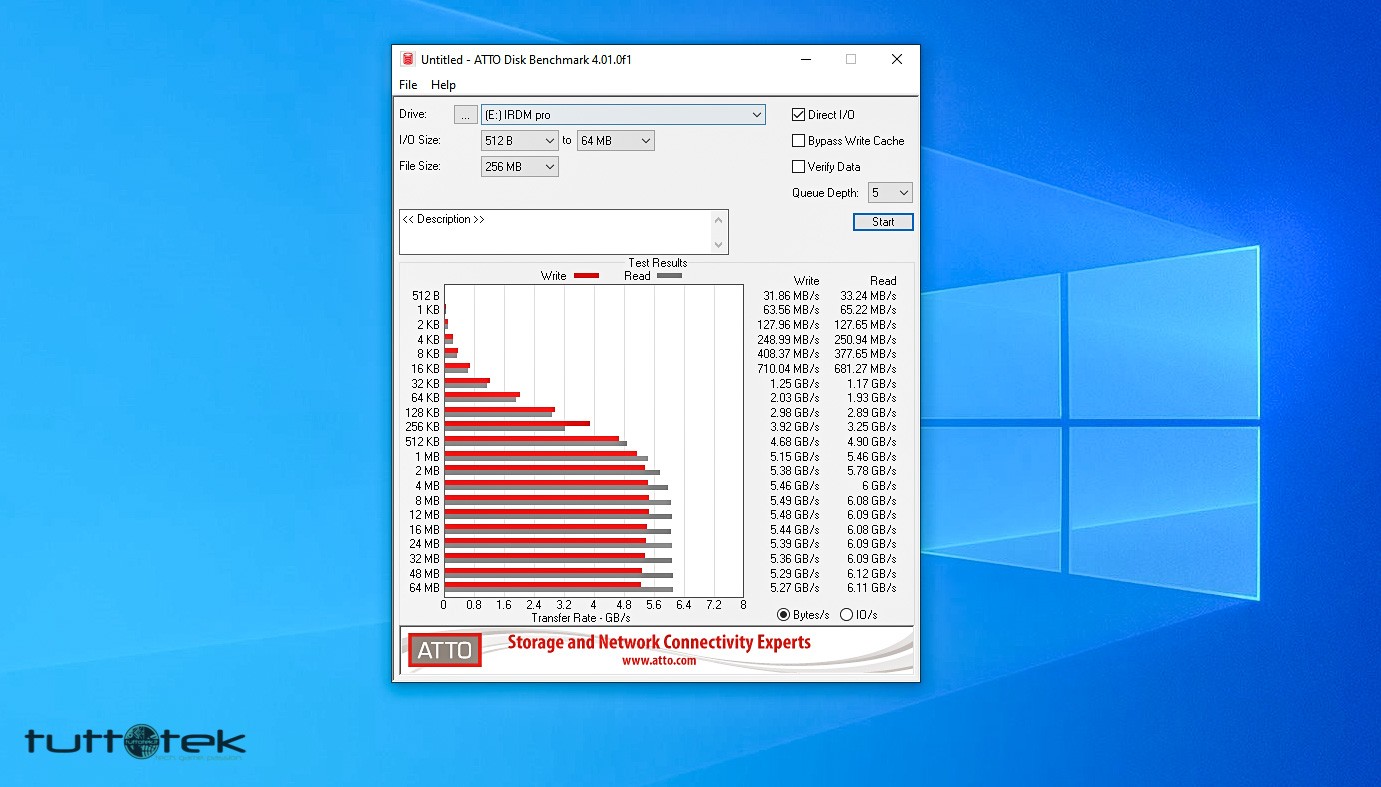
Goodram IRDM PRO M.2 in action with HD Tune Pro
The last test I did was with HD Tune Pro, a professional tool also used by companies in the sector. It allows you to scan hard drives and SSDs to detect errors and deeply analyze different data and performance aspects, coming from the storage unit in question.
The first test was done in the File Benchmark sectionto measure file read and write performance with different block sizes ranging from 0.5 KB to 8192 KB (x-axis), very demanding test for these units. Once again we are faced with incredible performance.
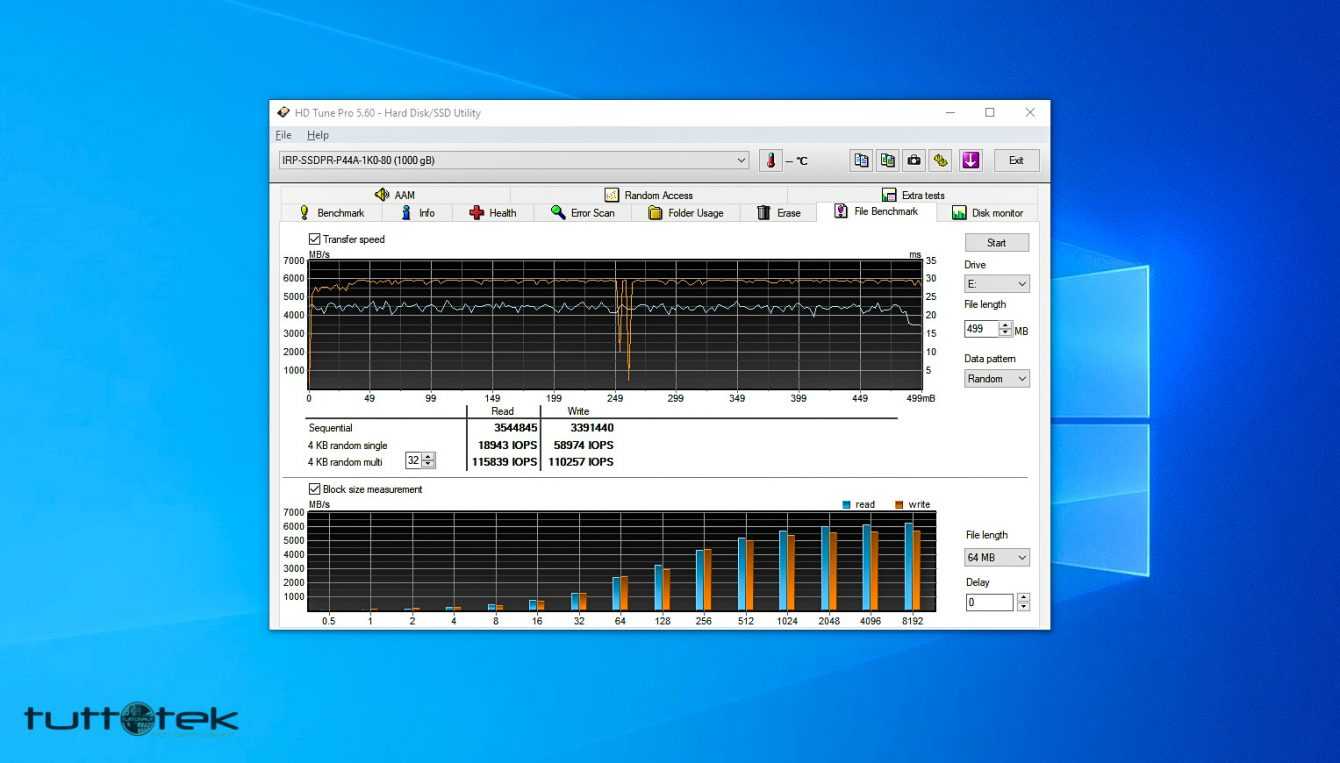
With 512 KB files we have read/write values of about 5300 MB/s and 5000 MB/s respectively, and with 8192 KB files read/write values of about 6600 MB/s and 5800 MB/s respectively. We can then observe in the upper graph (still in the File Benchmark section) an overall writing and reading phase eefficient in terms of performance and indirectly on consumptionthe. The oscillations present are quite normal for performances of this calibre, the negative drop visible in the slot of the test carried out between 249 and 299 mB is not significant, so peaks (ng.v) are regular. Test passed with full marks I’d say.
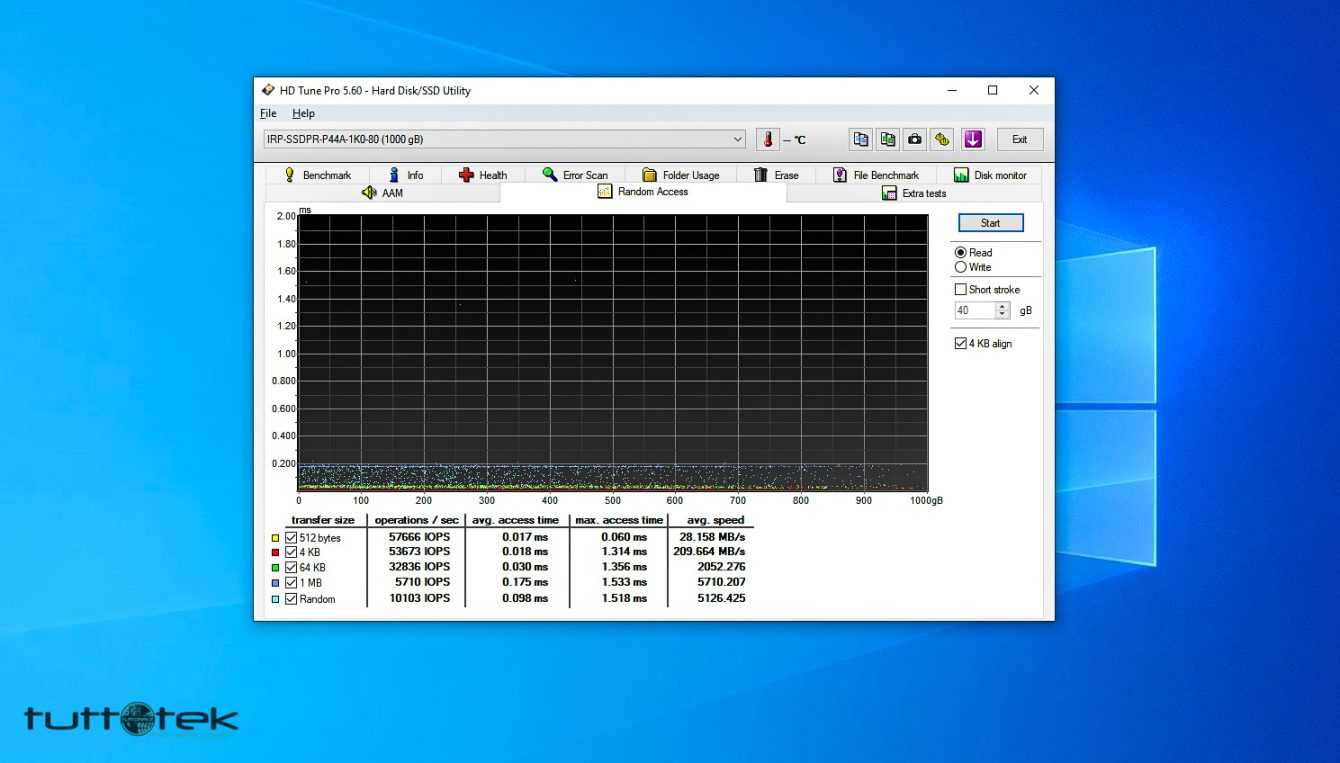
The second test was done in the Random Access sectionper measure the IOPS value. In this test we see that for 1MB file the IOPS value is equal to 5710, with a relative avg. speed equal to about 1.533 ms. Absolutely outstanding performance, which denote great power especially in reading. There are no anomalies in accessing the Chip Cache.
Finally, last note let’s talk about the degrees reached by the Drive. The tests were carried out without any heatsink installed on it, this to realize how much the curve actually canonly the Case AirFlow was present in support. During daily use the degrees have never exceeded 40/45 degrees, with Office use, and Adobe suites occasionally. Grades climbed to 48/50 during Benchmakrs and heavy use of PremierAnd. Data which, however, overall are acceptable, given the power of the Drive, and which therefore with the Heatsink installed would reverse the condition.
Conclusions and price
In conclusion, we were surprised by this product, how it performed in all the scenarios it was subjected to, and above all by the consistency obtained during our tests. In daily use then, it has never shown signs of hesitation, slowdowns, even with the Drive filled up to about 50%. Reason why we feel like recommending it to you.
A drive, when filled beyond its half capacity, reduces performance and one can appreciate a decline in random writes and accesses to certain memory cells, in this case the curves were very minimal, and there was no marked depletion.
By making full use of this Drive, we would certainly recommend it for Editing operations with total fluidity, but it can also be used for Gaming, to enjoy reduced loading and lower latencies. Drive is available in different sizes, from 1, 2 and 4TB, and has a 5-year warranty. As far as prices are concerned, currently it has not yet entered the market in Italy, as it does in the rest of Europe, but there are several authorized resellers in the area present on Amazon and third-party sites, the cost for this cut is around 200 Euros. Obviously salt for the higher cuts.
A very high cost, which…






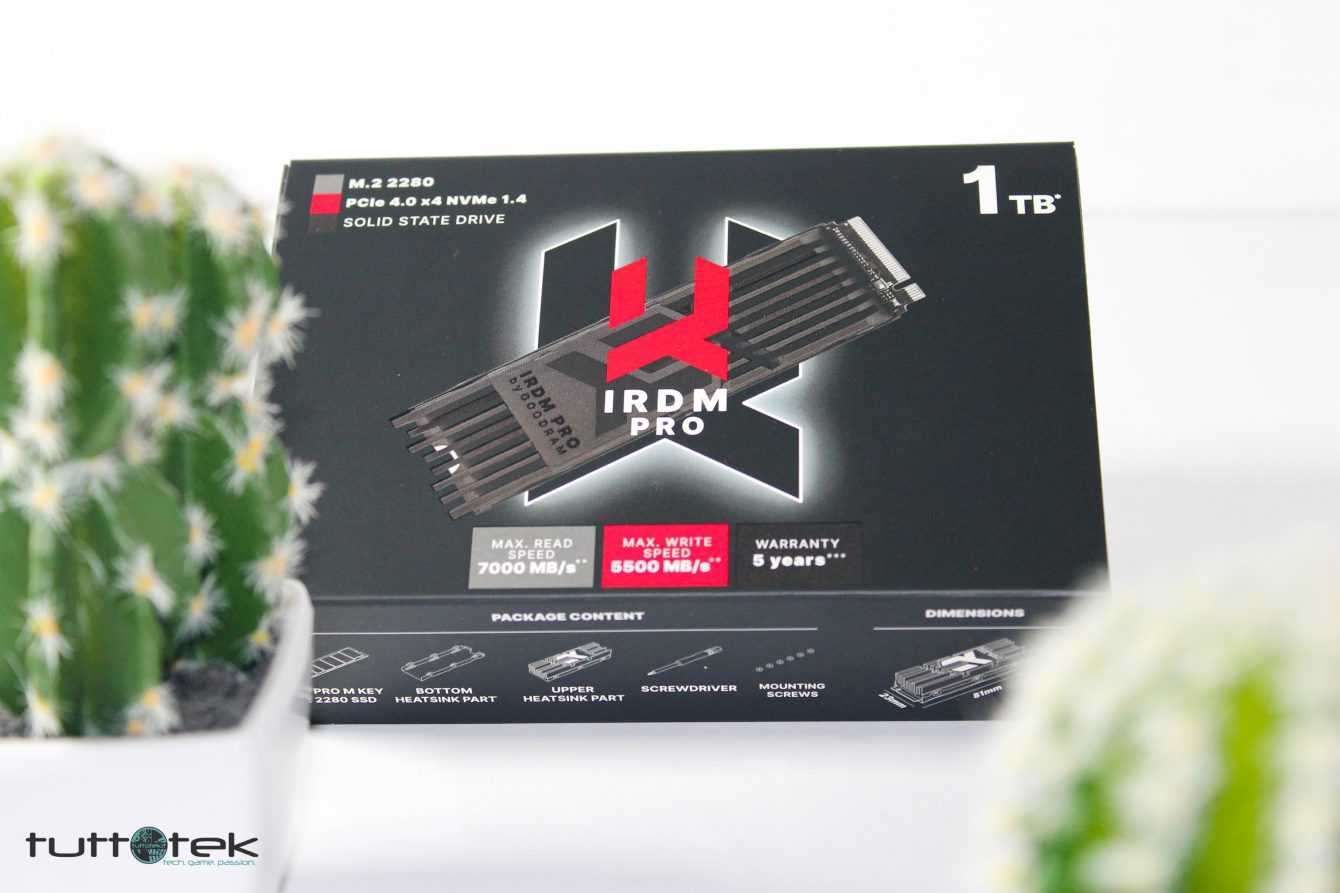






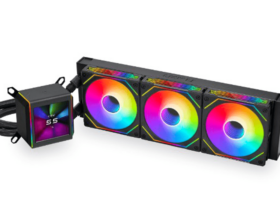


Leave a Reply
View Comments